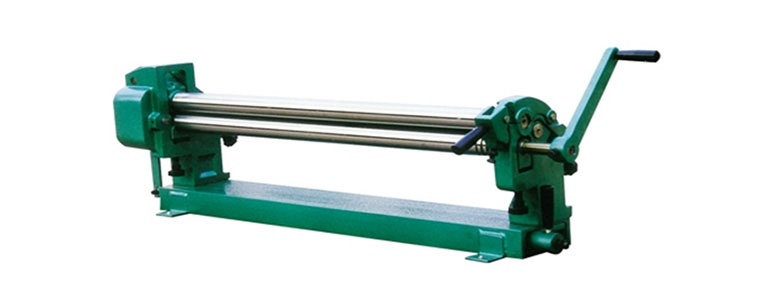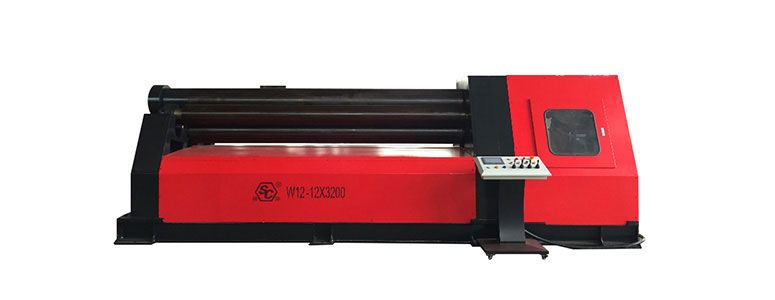
The plate rolling machine is an essential technological tool in the manufacturing and metalworking businesses. It is used to create cylindrical shapes from metal and has become a staple tool among many trades and professions.
From metal pipes to buckets and more, the plate rolling machine can make it all. It was created to fill the gap in the metalworking field and make the job easier to manage and much more efficient. The plate rolling machine can be dated back as far as three centuries and continues to grow and advance to this day.
In this article, you will learn about the history of the plate rolling machine along with how it has developed, changed, and adapted over a period of time.

To give you a better idea of where the plate rolling machine came from and how it came to be, let us take a look at the plate rolling machine history.
The plate rolling machine can be dated all the way back to the 18th century, which we will dive more into in the next section, but the modern-day metal rolling machine was not created until the 1950s.
While people do not know exactly when the plate rolling machine was first invented, it is even argued to go back all the way to the 17th century in metal mills because the demand for metal was high. In the 17th century, it would have been controlled by manpower and used for fine metals such as gold.
From there, it is believed that the rolling pins were then made more efficient in the 18th and 19th centuries leading us to the hydraulic and electric plate rolling machine that we now use today.

Get Inquiry of CNC 4 Roll Plate Bending Machine
Throughout the past two centuries, the metal plate rolling machine development has been substantial. While it has been in use for years upon years, it has gone from being inefficient and difficult to use to quick and easy.
Since the 18th century, metalworkers and manufacturers alike have been using the plate rolling machine to create metal cylinders, it has just been perfected through technological advancements and time.
While the modern plate rolling machine is much more technologically advanced, the use of rounded bars to bend metal is believed to be dated all the way back to the 18th century to a man named Henry Cort. It is even argued that it goes all the way back to the 17th century. Henry Cort was an English iron master who would create iron barrel hoops by running metal through a set of rollers. These rollers would be controlled either by hand or by gear.
After that, the next big advancement in the plate rolling machine was the use of steam power rather than manpower to control the machine. Rather than having the crank the gear, the plate roller was adapted to use either a steam engine or a water press sometime in the 19th century. With this new advancement came the ability to roll thicker metals rather than just thin sheets.
The first electric motors that could control the plate rolling machine were not invented until the 1830s which then replaced the use of the steam engine. Many machines simply swapped out the old engine with the new electric motor to be more efficient and be able to roll thicker sheets of metal than before.
During this time period, the most common form of plate rolling machine was the pyramid design which featured two rolling pins on the bottom and one on the top to bend the metal into a cylinder shape. While this did create a cylinder shape, it did result in one big problem: the edges wouldn’t quite line up because they were flat. Rather than just welding them together, they would have to cut off the edges which were neither efficient nor easy to achieve.
The biggest advancements to the metal rolling machine were during the industrial revolution when factories and manufacturers were booming and in high demand. In reaction to this high demand, the plate rolling machine had to be updated and advanced to meet the standards of the time.
It wasn’t until the 1950’s when the modern plate rolling machine as we now know it was created with hydraulics and electric motors to power it fully.
The modern plate rolling machine does not require manpower or steam engines. Instead, it is fully electric and will run on its own.
On top of that, the metal rolling pins no longer need to be cranked or placed by hand. Instead, they use hydraulics to move the rolling pins to the position they need to be in for the project.
For a rough breakdown of the plate roll bending machine development, here is a short timeline of what is known of the history:
- The 1600s – People are believed to have use rolling machines to roll small and fine metals such as gold in mills.
- The 1700s – Henry Cort and others use rolling machines that are hand-cranked to roll barrel hoops and more. They were powered by hand or by gears.
- The 1800s – The plate rolling machine switches from manpower to a steam engine and becomes slightly more efficient.
- The 1830s – The first electric motors for metal rolling machines are created and used to enhance the efficiency of the machines. Pyramid machines are the most common type of machine.
- The 1900s – Hydraulics and electric motors are beginning to be used on plate rolling machines so that manpower is no longer required. They can bend thicker metal and at a faster pace than before.
Overall, throughout the span of the past couple of centuries, the metal plate rolling machine has advanced tremendously and become a much more efficient tool and machine. From a hand-powered tool to a fully electronic machine, the plate rolling machine has been in use and has existed for over 200 or possibly 300 years.
The need for the plate rolling machine spans over time and continues to be a highly useful tool in many manufacturers’ lines of work. Because of this, it only continues to advance and become quicker, more accurate, and more efficient as the technology gets more and more advanced.